Storms, floods, earthquakes, burst pipes, electrical short-circuits and malicious acts are just some of the major risks that can lead to the irretrievable loss of collections.
-
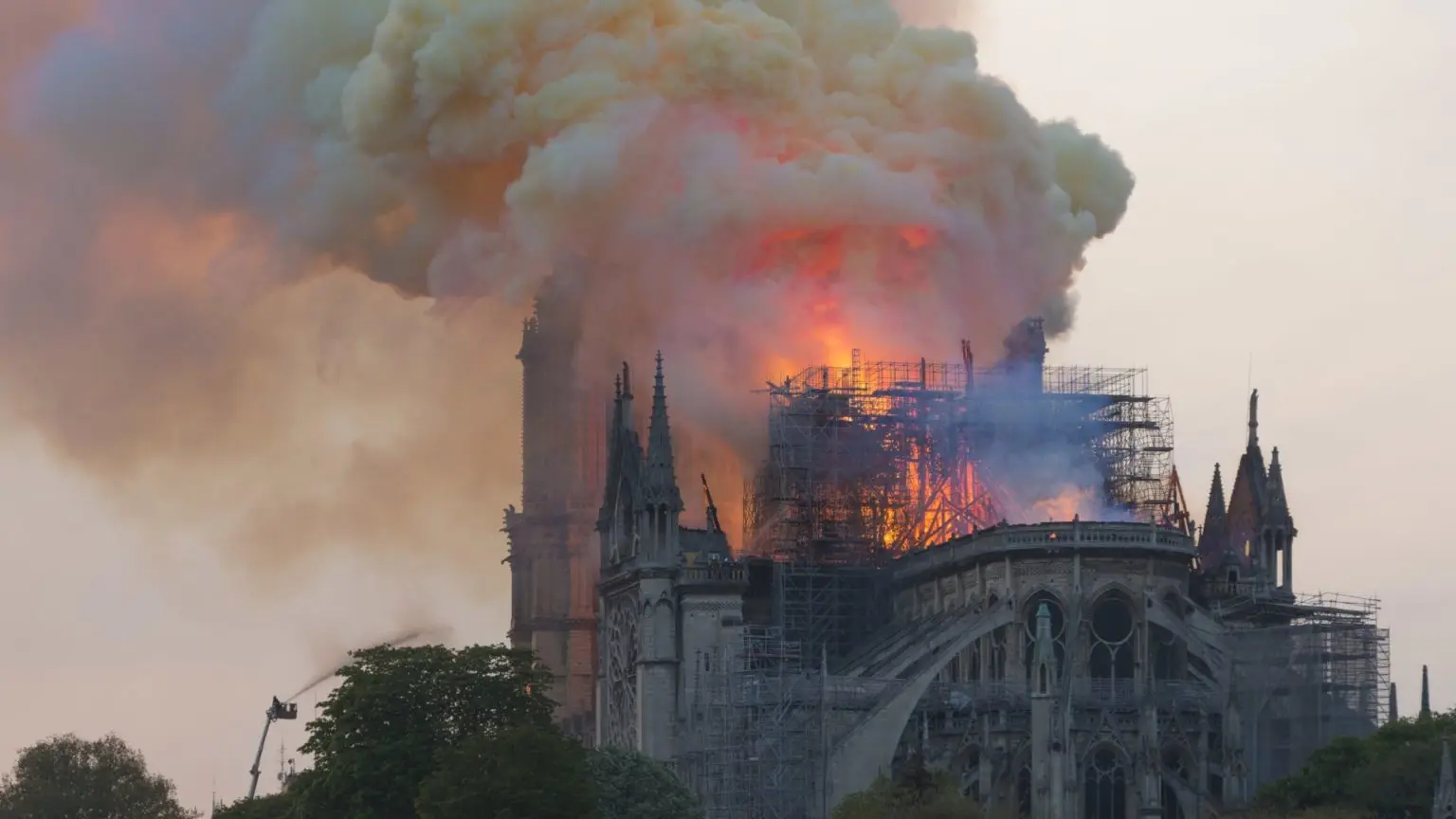
-
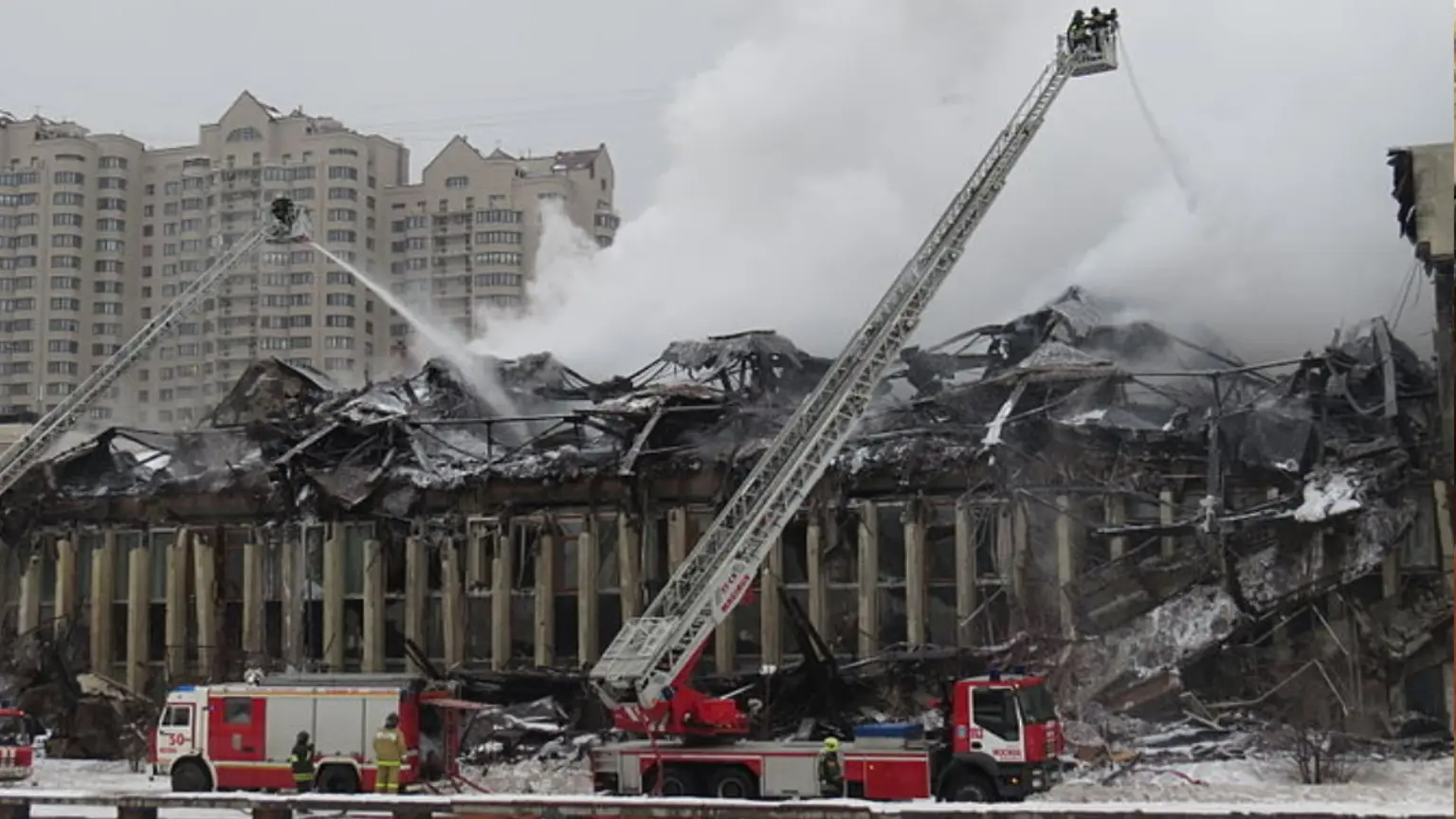
On 31 January 2015, it took 150 fire-fighters 25 hours to extinguish a fire in the library of the Institute of Scientific Information for Social Sciences in Moscow, Russia. The fire, probably caused by a short circuit in a poorly maintained building, destroyed 15% of the 14 million documents dating from the 16th to the 20th centuries. (Photo © Putnik CC-BY-4.0)
-
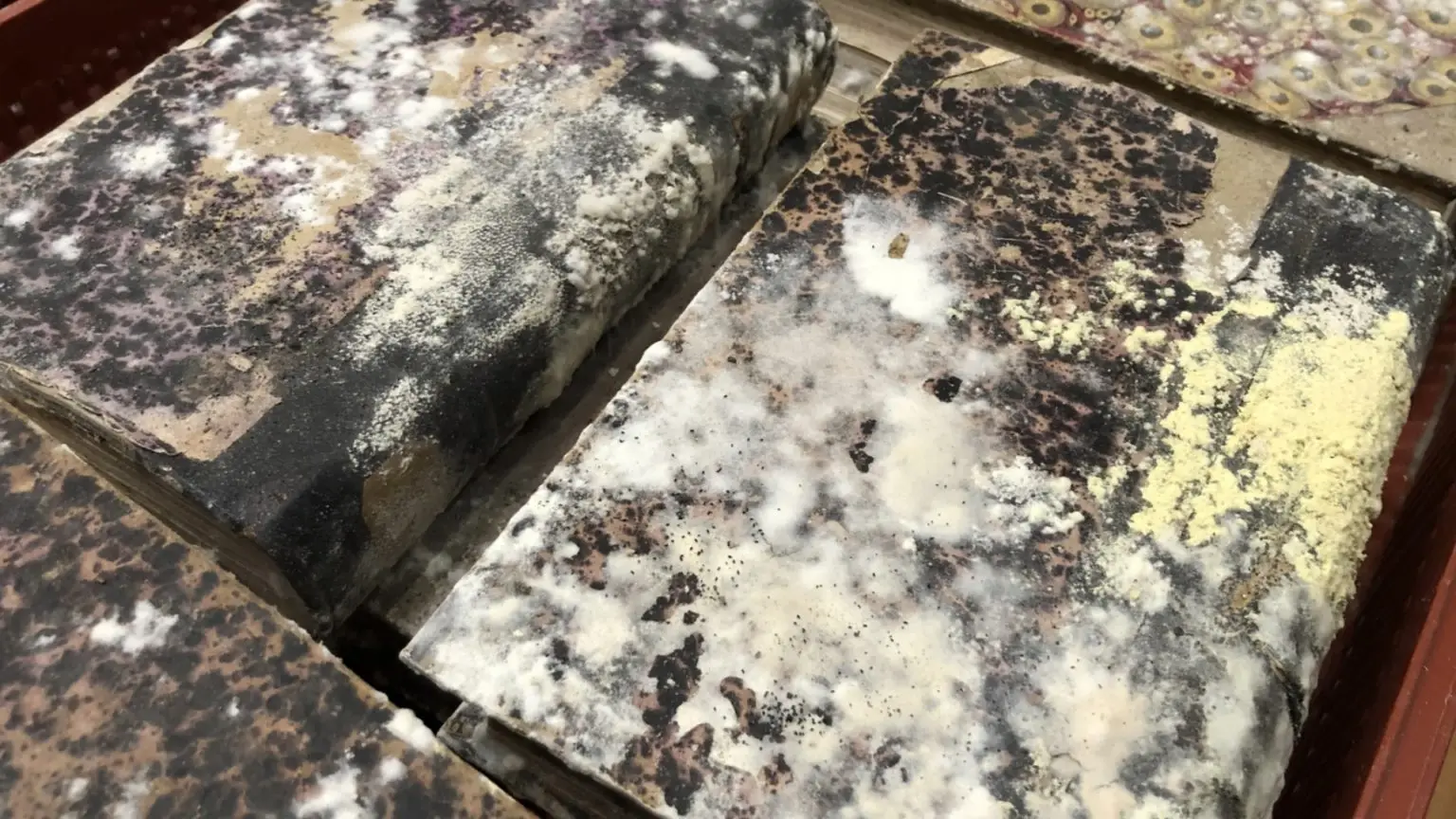
After water damage, it only takes a few hours for mould to develop. It attacks materials at their core, weakening them irreversibly. Affected documents can no longer be consulted, as they could endanger the reader’s health. (Photo © Camille Haumont, Page à page conservation)
-

Gloves, helmets, FFP2 masks, buckets, vacuum cleaners, water-absorbing cushions, crates, etc. Emergency kits are available for libraries to use in the event of a minor incident.
-
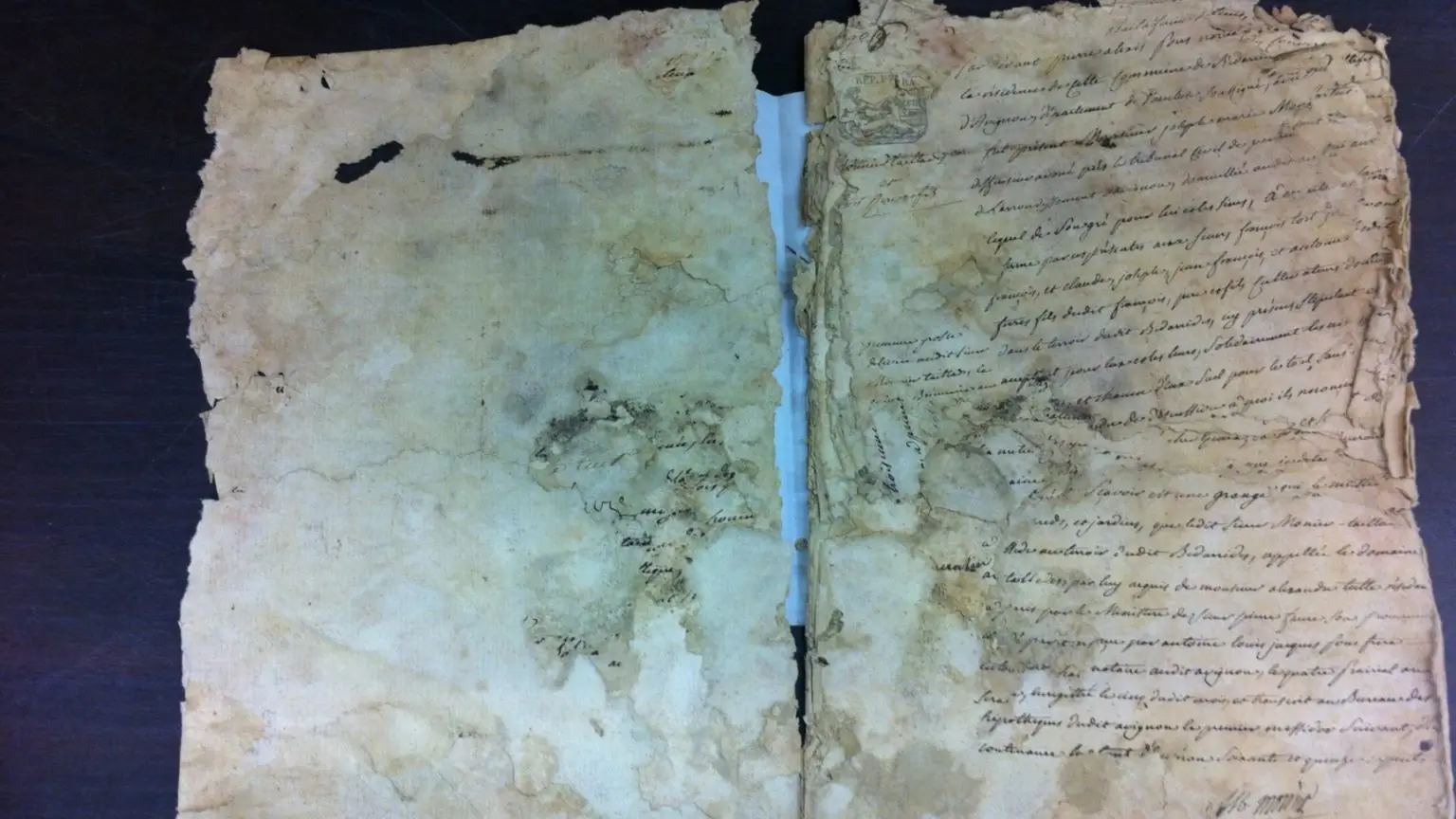
After water damage, it only takes a few hours for mould to develop. It attacks materials at their core, weakening them irreversibly. Affected documents can no longer be consulted, as they could endanger the reader’s health. (Photo © Camille Haumont, Page à page conservation)
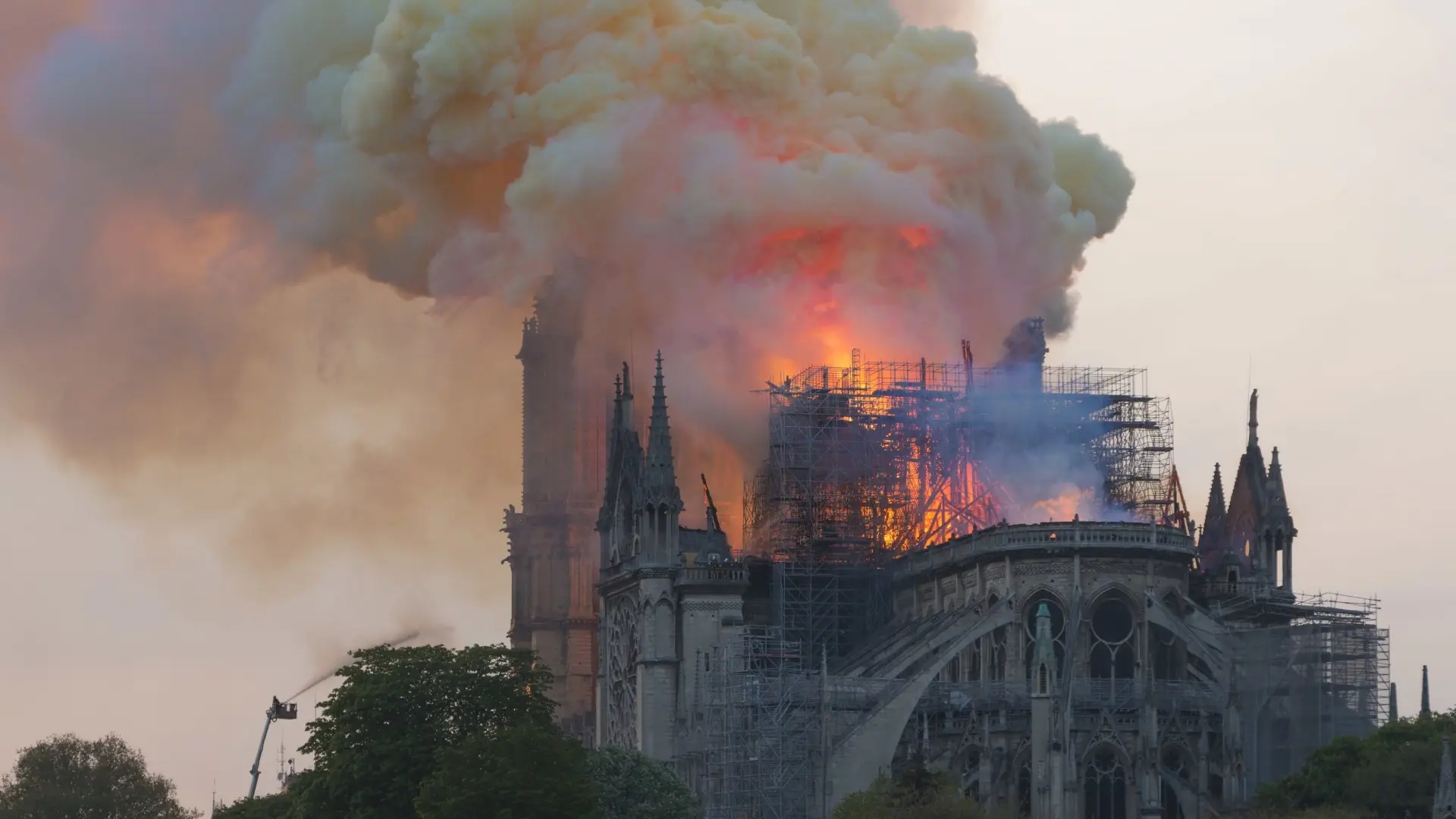
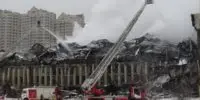

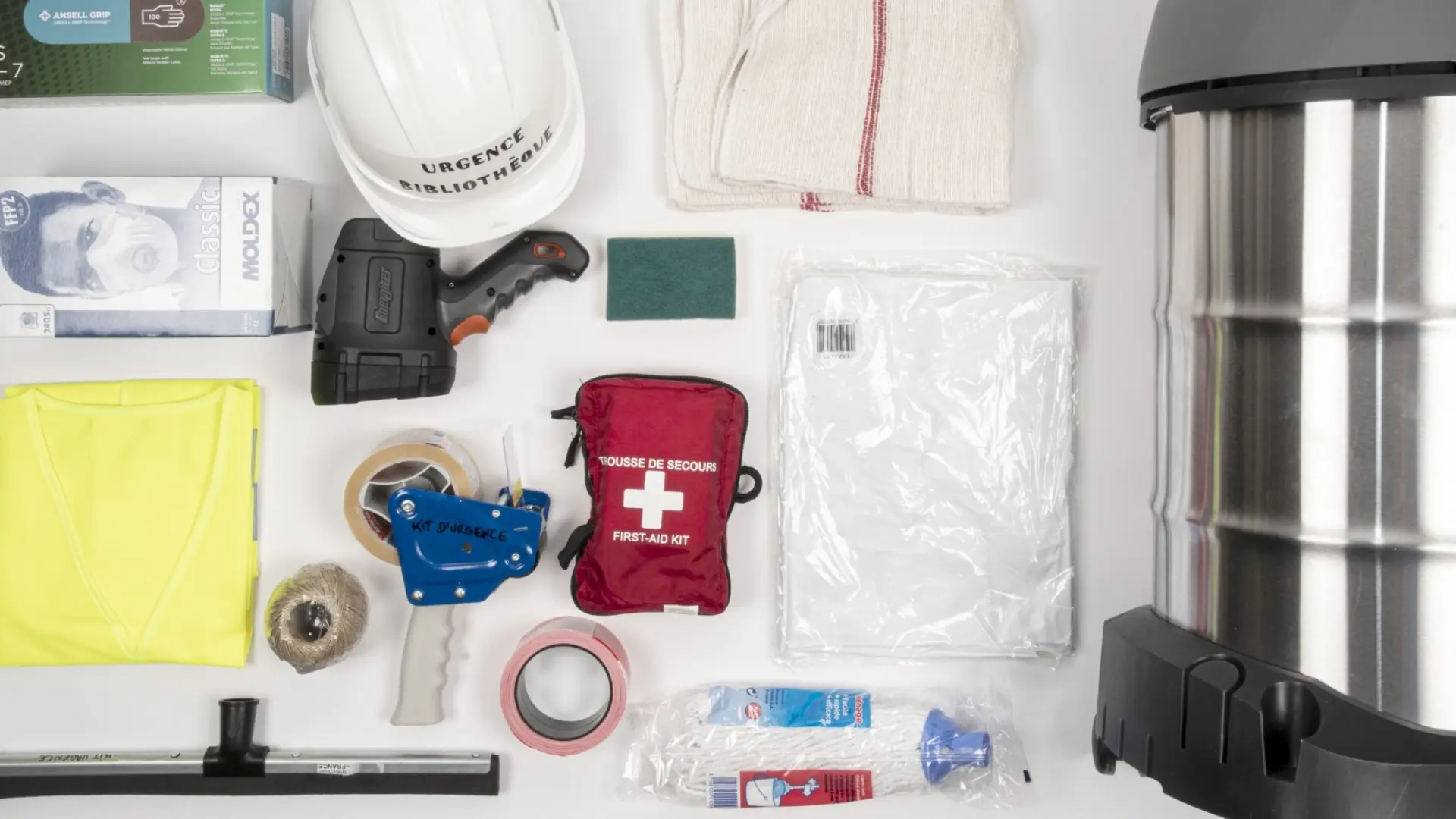
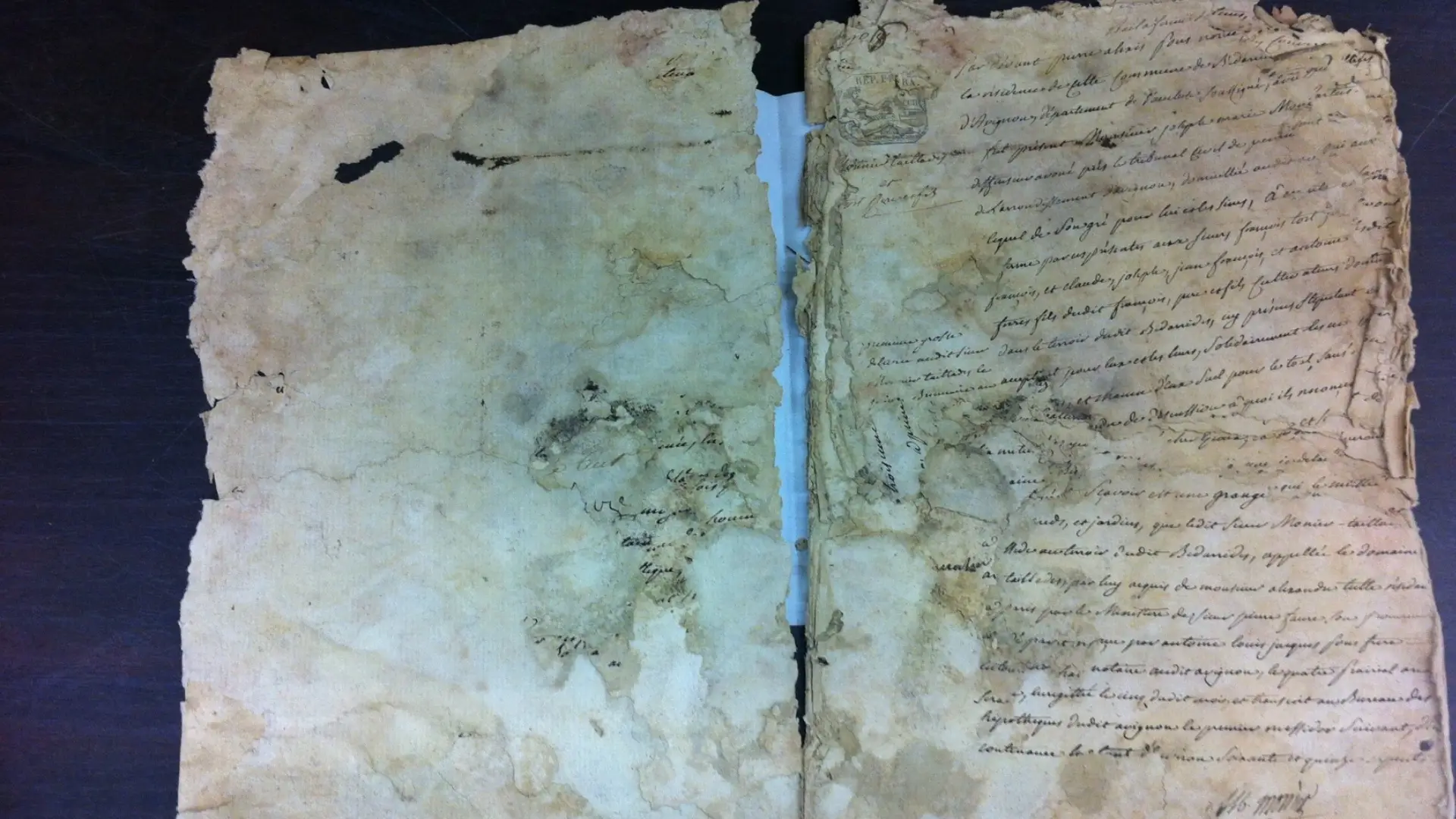
The fire at Notre-Dame de Paris demonstrated the fragility of our heritage and our attachment to the historical symbols that mark our collective memory.
How can we protect our heritage? How should we respond in the event of a flood, fire or mould infestation? Which documents should be saved first? Where should the damaged works be stored?
In order to be best prepared, institutions (archives, museums, libraries, etc.) draw up their own battle plan: the safeguarding plan.
The idea is to build up a small army of staff – and fire-fighters – who can be deployed very quickly in an emergency.
Information and training are the key pillars of the plan: risks must be identified, major works located, rescue equipment acquired and “soldiers” trained to rescue the collections. Everyone must be familiar with the premises, the procedures to be followed and the precautions to be taken when handling fragile documents.
When disaster strikes, it is essential to sound the alarm and surround yourself with the right people!
Know who to call, requisition storage areas and organise sorting, drying and/or freezing pending the arrival of restorers.
Anticipation and rapid deployment are therefore the keys to limiting losses on the day of the disaster.
A Plan for Safeguarding Cultural Property
and Blue Shield France
Protecting cultural heritage is an objective set out in the ORSEC plan (organisation of the civil security response) of the French Internal Security Code. Local authorities are being urged to put safeguarding plans in place in order to respond to emergencies. A Plan for Safeguarding Cultural Property (CBMP) in a historic monument, museum, archive or library must:
- Make it possible to immediately locate priority property to be evacuated or protected in situ in the event of a disaster (high cultural and historical value);
- Specify the material resources needed to deal with this property, while ensuring that it can be properly traced and managed once it has been dealt with.
This document is an operational tool to help emergency services or the head of the institution make decisions; it will also be used by the fire brigade in the event of a disaster. It must provide a list of the priority property to be evacuated or protected in situ and its location on captioned and numbered plans.
At a national level, Blue Shield France, which holds the official status of Association and Registered Charity under the French law of 1901, brings together heritage and emergency service professionals to raise awareness of the need to protect all types of cultural property against all natural hazards.
The association teaches heritage specialists to understand and manage risk, offers training, communicates with public authorities and promotes the integration of cultural heritage among risk management experts.
On an international scale, Blue Shield International – the equivalent to the Red Cross for humanitarian aid – complements these actions by identifying buildings and protecting them against natural destruction or destruction caused by military abuses. It also works with other non-governmental organisations when disasters occur.
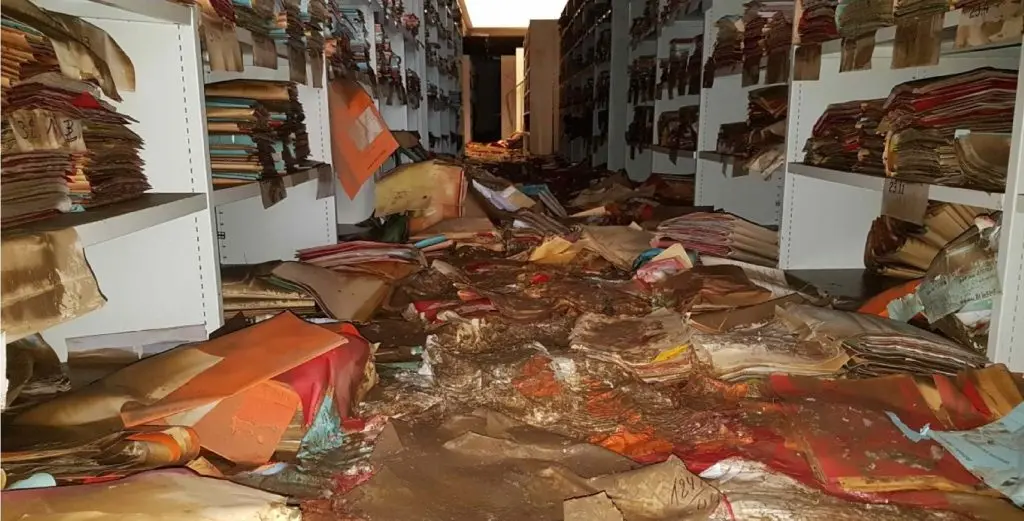
In the summer of 2021, Belgium suffered severe flooding. Many storage sites around Liège were affected. After the disaster, the State Archives reported on the extent of the damage. Blue Shield Belgium has been particularly active in putting volunteers in touch with the institutions affected. State Archives - Liège.
“A pied d’œuvre”, a video produced in 2019 by Blue Shield France. Exercise to evacuate heritage collections (objects, books, archives) affected by fire or flooding, organised in October 2018 by the Occitanie branch of the France Committee of the Blue Shield, in collaboration with the Departmental Fire and Rescue Service (SDIS 09)



